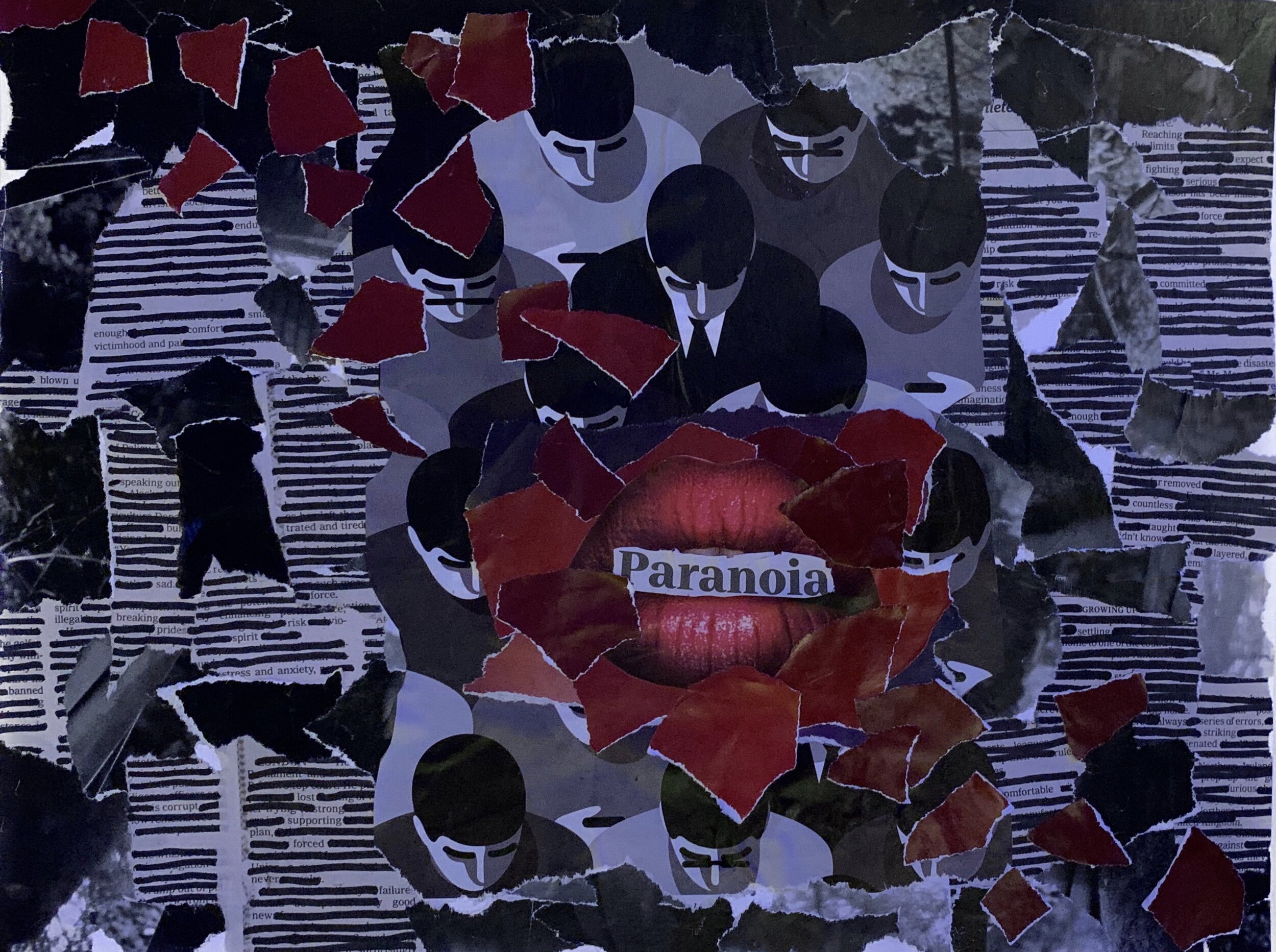Contemporary Women’s Playwriting Final
How to Defend Yourself
by: Lily Padilla
This play was something that was very personal to me, and probably to many other women as well. Something we have to learn from a young age is that we can never stop paying attention. We have dozens of unwritten rules to be able to defend ourselves. Don’t go anywhere alone, carry something you can use as a weapon, share your location with someone in case you go missing, don’t accept drinks from anyone, etc… How to Defend Yourself got deep into the discussion of these rules, and how hard women work to do everything we can to prevent assault from happening.
The feeling this play really brought out of me was hopelessness. It is hopelessness that some of us feel when it comes to assault, but do not want to acknowledge for fear of becoming too vulnerable. Throughout this collage are words relating to one’s mental space after an assault. All other words crossed out: thoughts seemingly muted. I hoped to capture the consuming paranoia of being a woman in a man’s world, feeling like you are fighting the battle of existing in dangerous spaces alone.
Mouthpiece
by: Amy Nostbakken and Norah Sadava
As a beautiful and poignant story of what it means to be a woman, the duality of femininity, and how we cope with loss, Mouthpiece shares with us a sense of comforting humanity.
As Left and Right move through the story, we see them grapple with the loss of their mother, reflecting on ways in which they were similar to her. We also see a delicate representation of how women interact with one another and with the world. This is shown through interactions between Left and Right: literally two beings cut from the same cloth of life. I wanted to reflect the synchronicity of Left and Right’s characters in this collage, focusing on a unity between different identities we hold within us. These identities exist in harmony, or in chaos, through major life events, and ultimately they write a reality for us that only we can see.
Cost of Living
by: Martyna Majok
The play Cost of Living exhibits the complexity of vulnerability in interpersonal human relationships. The characters explore their relationships with one another through the implications of disability and the necessary vulnerability that comes with that. We begin to see the beauty of human understanding and acceptance. We also uncover how reluctant we can be to accept help from those around us. Accepting help means being vulnerable, and we fear the thought of opening up and possibly becoming a burden. I wanted to focus on this wall that we place around ourselves as we isolate and turn away from those who offer to help us.


